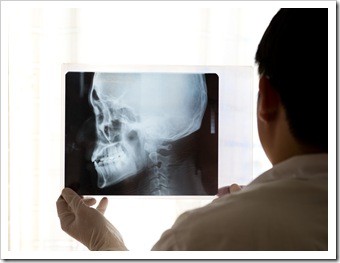Unlocking the Solution to TMD
by Dr. Barry Coniglio
Read Unlocking the Solution to TMD by Dr. Barry Coniglio to learn more about Coniglio Chiropractic Wellness Center and our Chiropractic office in Mantua, NJ.
We look forward to serving you! Call - 856-468-4200.

Does your jaw ache when you chew, or open your mouth wide to yawn? Do you suffer from pain or soreness in the front of your ear, in your jaw muscle, cheek, your teeth or your temples? Do your teeth throb or cause you pain? Do your jaws make clicking sounds loud enough to worry or bother you? Do you find it a challenge to open your mouth wide? Does your jaw ever lock up as you open it?
If your answer is “yes” to a few of these questions, you may have a temporomandibular joint disorder, or TMD. TMD is a group of conditions, which often cause pain, that affect the jaw joint.
Signs may include:
- Increasing pain in the face, neck, or shoulders;
- Limited movement or locking of the jaw;
- Painful clicking or grating when opening or closing the mouth;
- A substantial difference in the way the upper and lower teeth fit together;
- An Often occurrence of Headaches, earaches, dizziness, hearing problems and difficulty swallowing.
Pain or discomfort in the jaw muscles or joints is usually temporary for most people. The discomfort often occurring in cycles, and resolving once you stop moving the area. Some people with TMD pain, however, can develop chronic symptoms. Your Doctor of Chiropractic can help you establish whether your pain is due to TMD and can provide the proper treatment if needed.
Why Does TMD Occur?
Researchers agree that TMD falls into three categories:
- Myofascial pain – a discomfort or an ache in the muscles of the jaw, neck, and shoulders;
- A dislocated jaw or displaced disc;
- Degenerative joint disease – rheumatoid arthritis or osteoarthritis in the jaw joint.
Serious injury to the jaw is a leading cause of TMD. For instance, anything from a blow to the jaw during a sporting activity to repetitive overuse, such as chewing gum excessively or chewing on one side of the mouth too often, may cause TMD.
Both physical and emotional stress can lead to TMD, as well. The once common process of sitting in a dentist’s chair for several hours with the mouth wide open may have been partly responsible to TMD in the past. Now, most dentists are aware that this is harmful behavior for the jaw. Not only are they now taking breaks while they do dental work, but today’s dentists scan patients for any weaknesses in the jaw structure that would cause physical injury if they keep their mouths open very long. In case of this, they may use medications during the procedure to reduce the injury potential, or they may send the patient to physical therapy directly after treatment. In less severe cases, they guide patients through exercises they can do at home to loosen up the joint after the visit.
While emotional stress itself is not usually the root cause of TMD, the body’s reactions to the stress can be. When people are under psychological stress, they may clench their teeth, which can be a major factor in their TMD.
Some conditions once thought of as causes of TMD have been dismissed—moderate gum chewing, non-painful jaw clicking, orthodontic treatment (when it does not involve opening of the mouth for an extended amount of time, as mentioned above), and upper and lower jaws that have never fit together well. Popular theory now holds that while these may be trigger provoke TMD, they are not causes.
Research has shown women experience TMD four times more often than men. Posture and higher heels may contribute to this higher percentage.
Treating and Diagnosing TMD
Diagnosing or ruling out TMD is not difficult. Your Doctor of Chiropractic (DC) will possibly ask you to gently bite down on three of your fingers. You may also be asked to open and close your mouth repeatedly while the doctor monitors the dimensions of the jaw joint and the balance of the muscles also. If you have no problems while doing these things, then the problem is not likely to be TMD. Your Chiropractor can then look for signs of inflammation and any abnormalities. Although simple, sometimes special imaging, an x-ray or an MRI may be needed to help confirm the diagnosis.
If you have TMD, your doctor may recommend Chiropractic treatment, massage, applying heat/ice and special exercises. In most cases, your Chiropractor’s first target is to relieve symptoms, in particular pain. If your Doctor of Chiropractic feels that you need special appliances (with the exception of guards against teeth grinding), he or she will refer you to an orthodontist for co-management.
Along with treatment, your Chiropractor can teach you how to:
- Lessen the pain through heat and ice packs. Like all muscles, ice is recommended shortly after the injury or after your pain has started. In the later stages of healing, switching to heat is important, especially if you are still experiencing discomfort.
- Avoid more damage through joint movements. For instance, chomping into a hard apple is just as bad as crunching into hard candy. Some food require opening the mouth too wide which has destabilizing effect on the jaw.
Perform exercises that are TMD-specific . Depending on your symptoms and condition, your Chiropractor will most likely recommend stretching or strengthening exercises. Stretching helps loosen tight muscles and strengthening helps tighten loose muscles. If needed, special feedback sensors in the jaw can be retrained.
For Your Health,
Dr. Barry Coniglio





